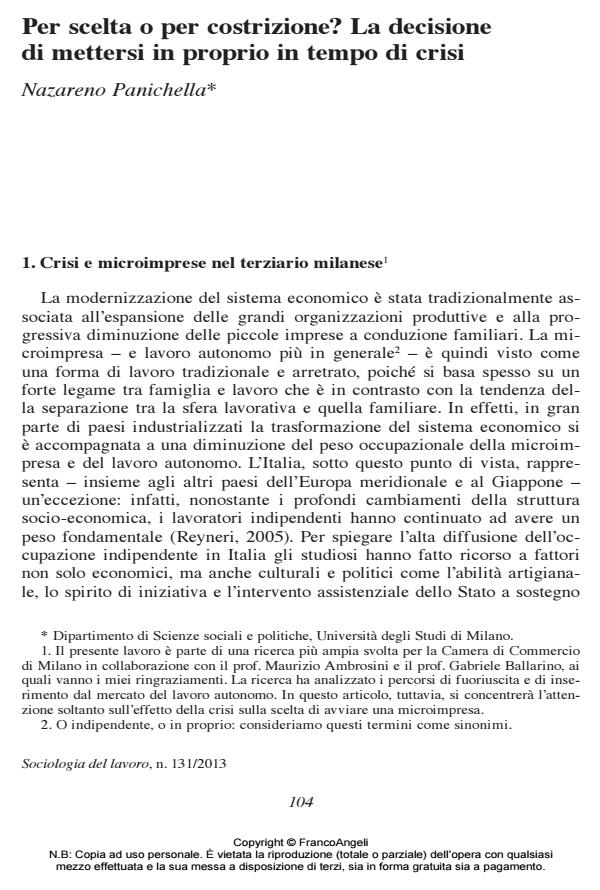Crisis and micro-enterprises in the service sector in Milan
Journal title SOCIOLOGIA DEL LAVORO
Author/s Nazareno Panichella
Publishing Year 2013 Issue 2013/131
Language Italian Pages 16 P. 104-119 File size 363 KB
DOI 10.3280/SL2013-131007
DOI is like a bar code for intellectual property: to have more infomation
click here
Below, you can see the article first page
If you want to buy this article in PDF format, you can do it, following the instructions to buy download credits

FrancoAngeli is member of Publishers International Linking Association, Inc (PILA), a not-for-profit association which run the CrossRef service enabling links to and from online scholarly content.
The aim of this work is to describe the paths that lead some individuals to create a micro-enterprise. The interviews showed that, during the last economic recession, the unemployment push and social mobility thesis may not be in opposition. It is possible that there is a sort of interaction between lack of occupational opportunities and investments aimed to improve the socioeconomic position. Indeed, in the case of individuals who have made an investment in social mobility prior to the entrance in the labor market, the lack of good job opportunities can be a real incentive to create a micro-enterprise. In these cases the access to self-employment is seen as an investment in social mobility, but also the lack of employment opportunities makes it convenient to open a micro enterprise.
Keywords: Micro-enterprise, social mobility, economic crisis, labour market, education, unemployment
- Unpacking the ‘Start-up City’ Maria Dodaro, pp.1 (ISBN:978-3-031-50211-8)
- Giovani e lavoro: cambiamenti dei significati del lavoro in tempo di crisi Antonella Spanò, in SOCIOLOGIA DEL LAVORO 154/2019 pp.203
DOI: 10.3280/SL2019-154011
Nazareno Panichella, Per scelta o per costrizione? La decisione di mettersi in proprio in tempo di crisi in "SOCIOLOGIA DEL LAVORO " 131/2013, pp 104-119, DOI: 10.3280/SL2013-131007